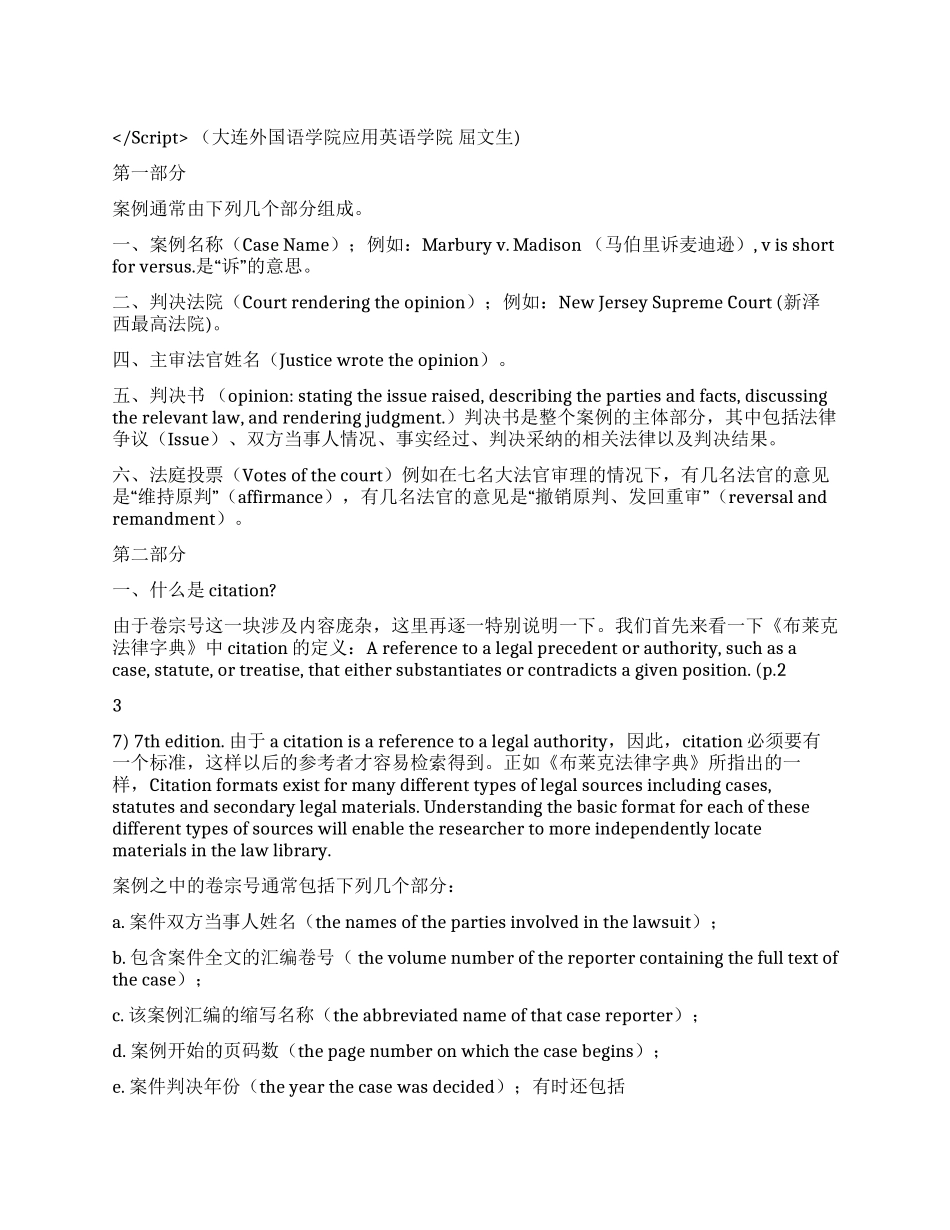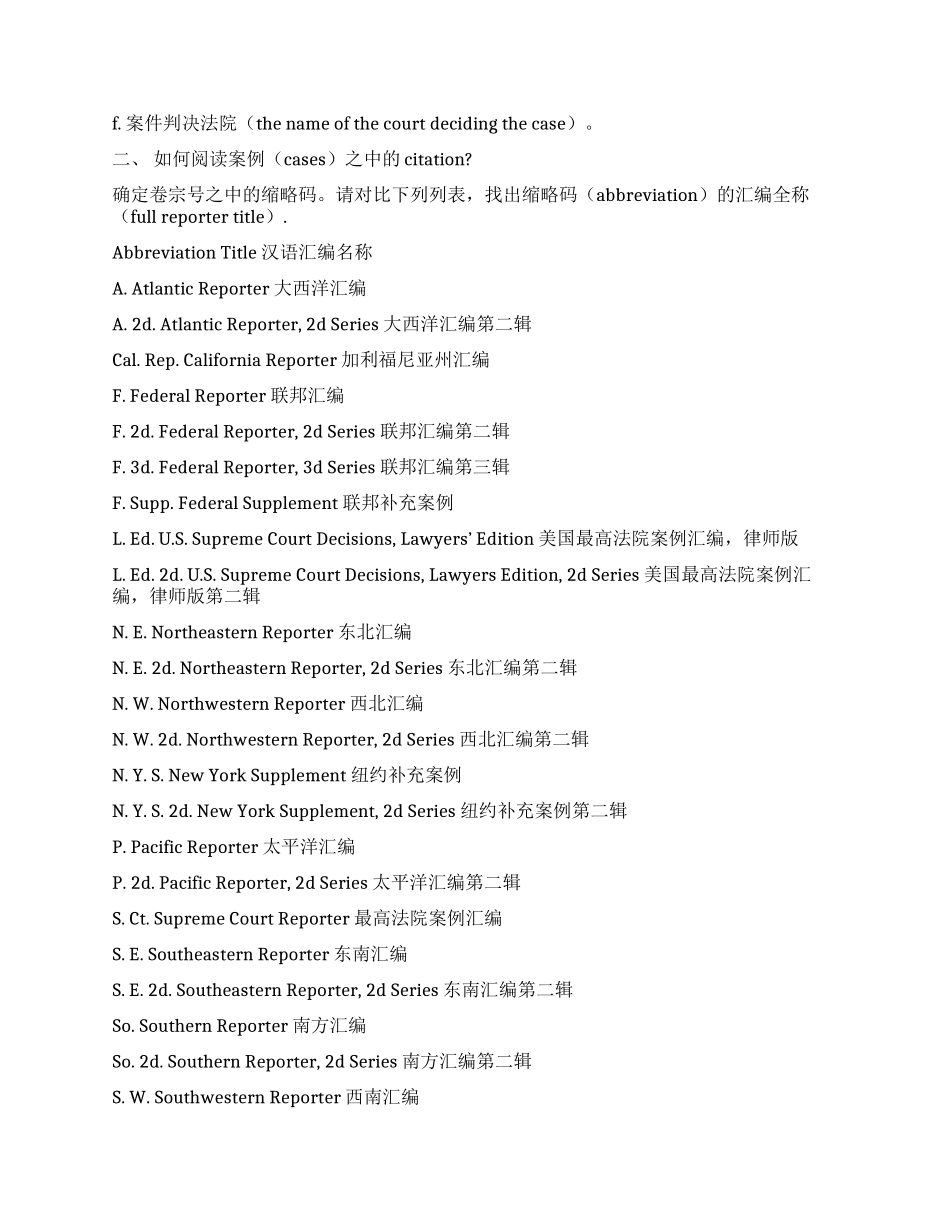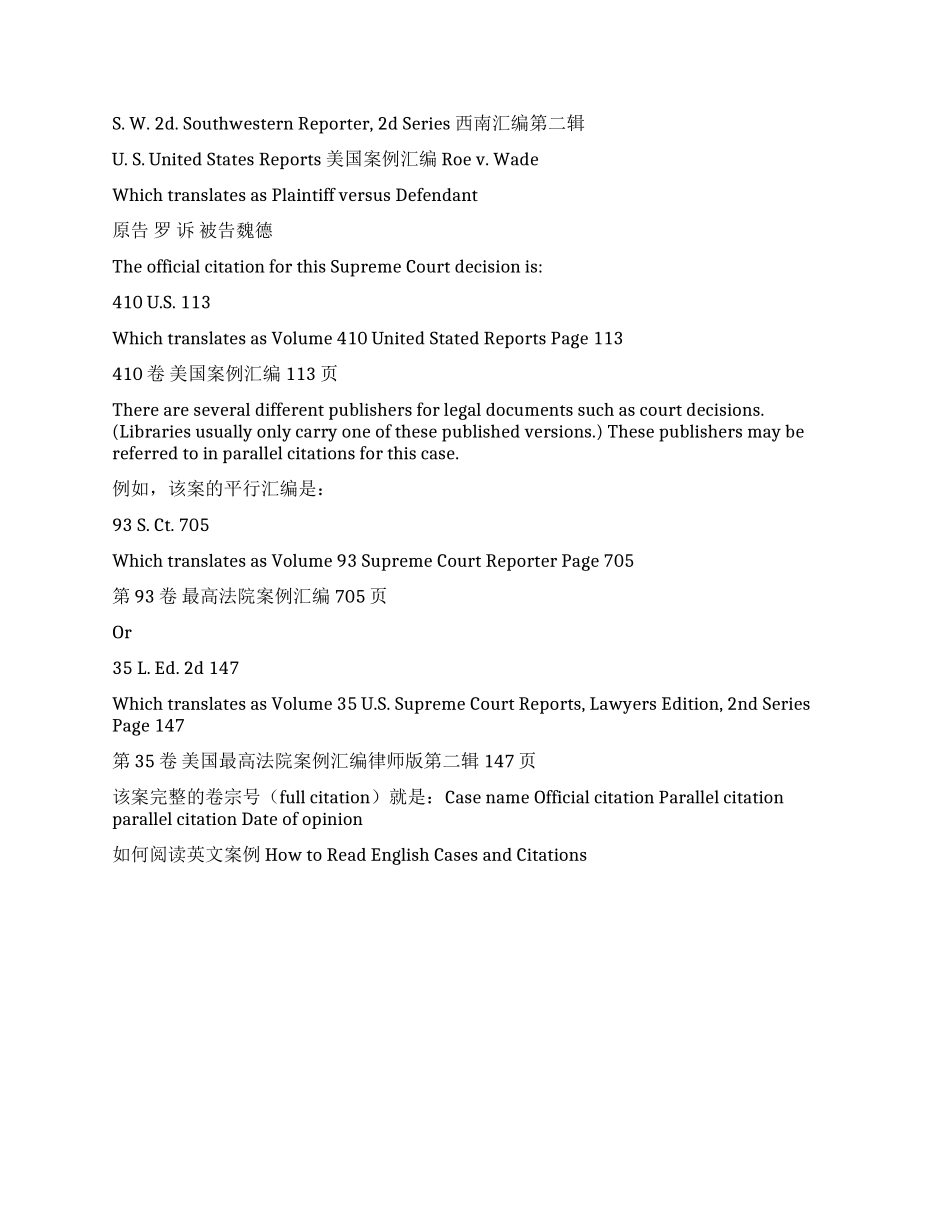(大连外国语学院应用英语学院 屈文生)第一部分案例通常由下列几个部分组成。一、案例名称(Case Name);例如:Marbury v. Madison (马伯里诉麦迪逊), v is short for versus.“”是 诉 的意思。二、判决法院(Court rendering the opinion);例如:New Jersey Supreme Court (新泽西最高法院)。四、主审法官姓名(Justice wrote the opinion)。 五、判决书 (opinion: stating the issue raised, describing the parties and facts, discussing the relevant law, and rendering judgment.)判决书是整个案例的主体部分,其中包括法律争议(Issue)、双方当事人情况、事实经过、判决采纳的相关法律以及判决结果。六、法庭投票(Votes of the court)例如在七名大法官审理的情况下,有几名法官的意见“”是 维持原判 (affirmance“”),有几名法官的意见是 撤销原判、发回重审 (reversal and remandment)。第二部分一、什么是 citation?由于卷宗号这一块涉及内容庞杂,这里再逐一特别说明一下。我们首先来看一下《布莱克法律字典》中 citation 的定义:A reference to a legal precedent or authority, such as a case, statute, or treatise, that either substantiates or contradicts a given position. (p.237) 7th edition. 由于 a citation is a reference to a legal authority,因此,citation 必须要有一个标准,这样以后的参考者才容易检索得到。正如《布莱克法律字典》所指出的一样,Citation formats exist for many different types of legal sources including cases, statutes and secondary legal materials. Understanding the basic format for each of these different types of sources will enable the researcher to more independently locate materials in the law library.案例之中的卷宗号通常包括下列几个部分:a. 案件双方当事人姓名(the names of the parties involved in the lawsuit);b. 包含案件全文的汇编卷号( the volume number of the reporter containing the full text of the case);c. 该案例汇编的缩写名称(the abbreviated name of that case reporter);d. 案例开始的页码数(the page number on ...


